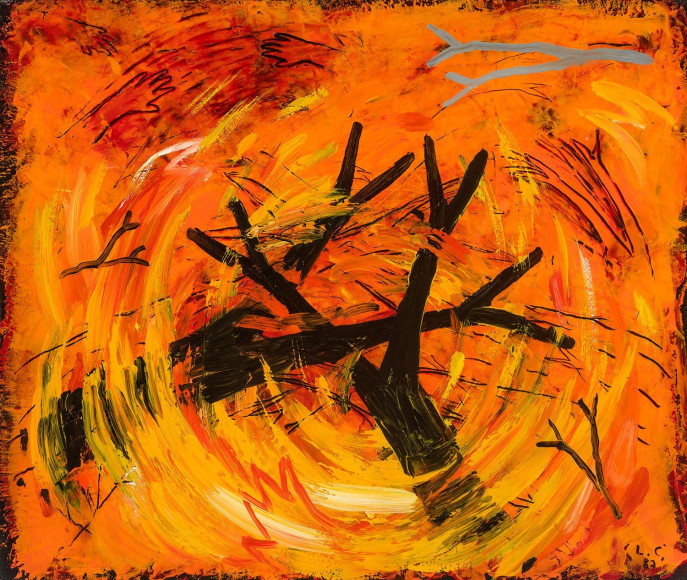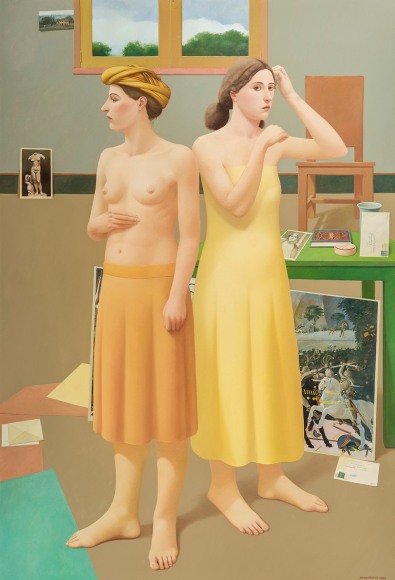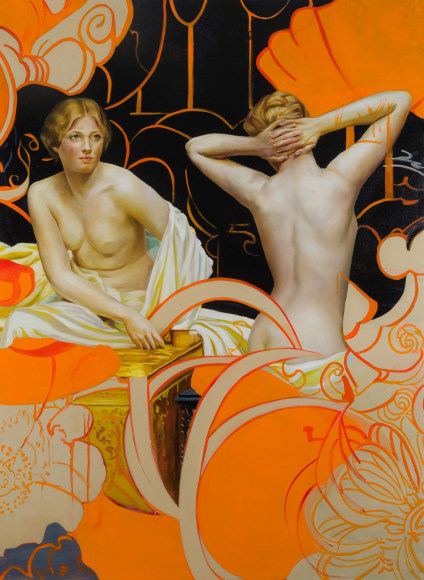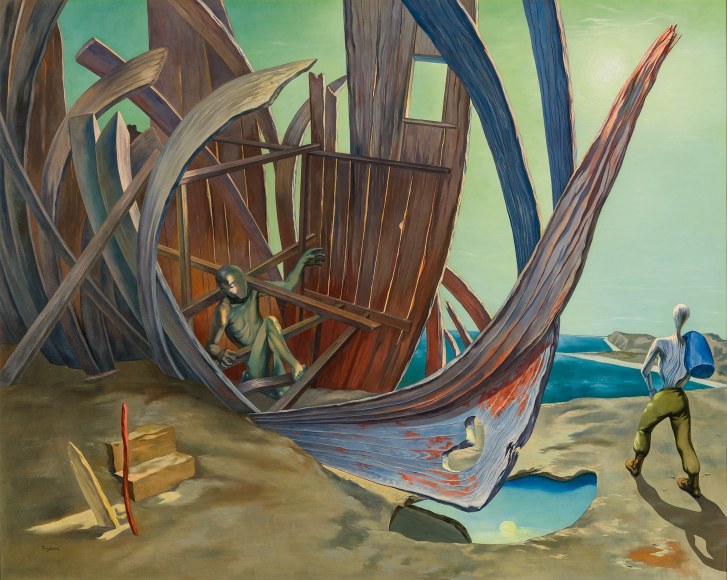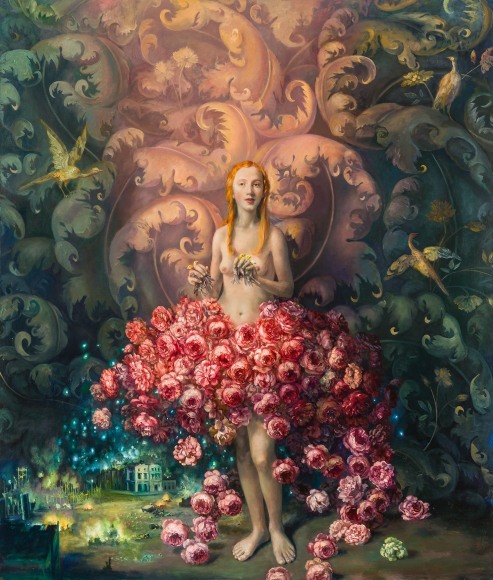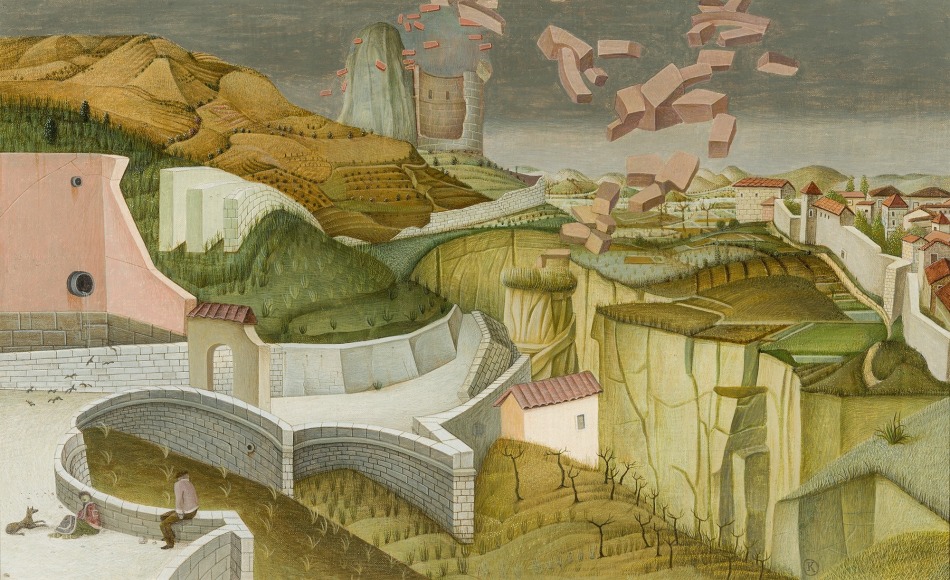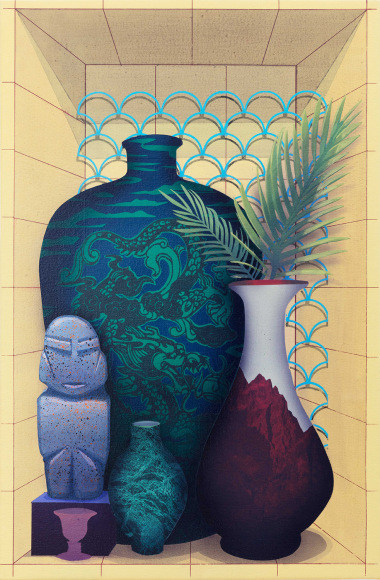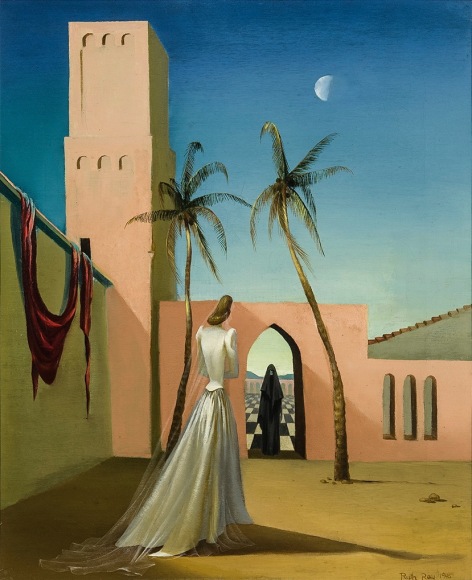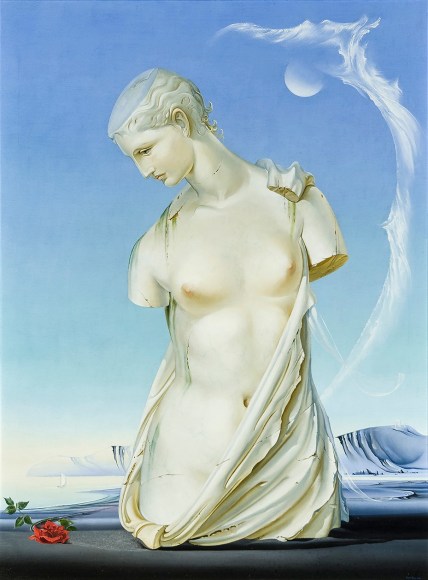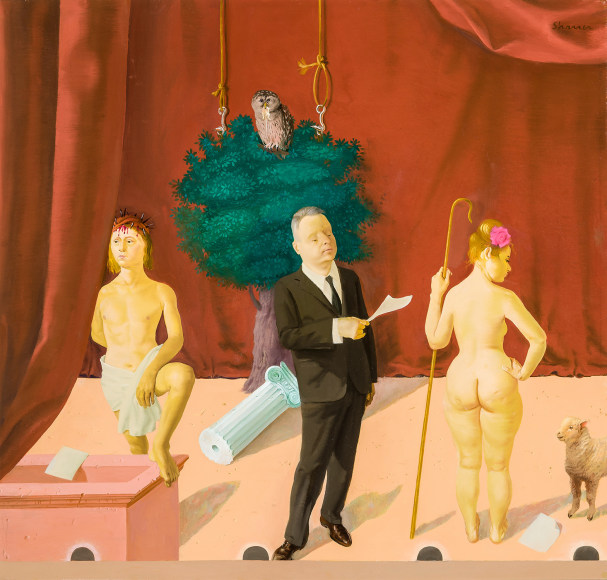“See Verso” is most often seen in the registration notes for a work of art. Labels, inscriptions, and dates find themselves grouped in with this term to describe the contents found on the backs of pictures. But what does see verso mean when taken out of this literal context? It is an indication that there is something more; you must look back to produce something new. See Verso: A Guide to Looking Back showcases an eclectic group of modern and contemporary artists who look back to their art predecessors as a means of fully understanding them.
Each work in See Verso possesses a unique mythic quality. Greco-Roman classicism, the art historical canon, biblical narratives, and the natural world are adapted onto canvas and paper as allegories, symbols, and as subjects themselves. Through these references, the artists are inviting us to look to history’s so-called “end product” to examine the present, and in turn render it changeable. Perhaps these myths shift or challenge perceptions. Perhaps they heighten them. One thing is certain: they ensure that history is not left in the past.

